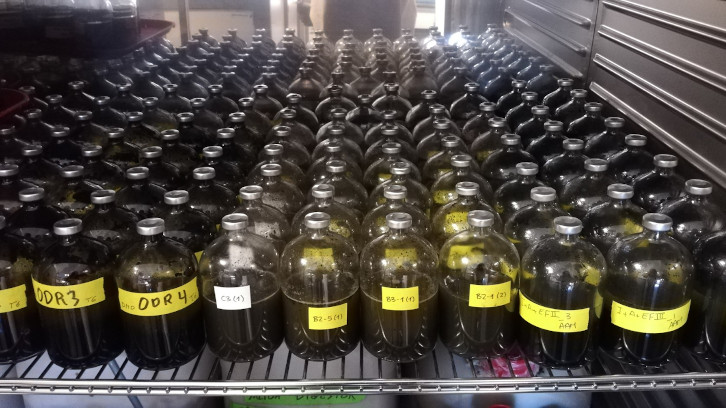The use of biochar in the production of renewable energy from waste

Biochar is gaining notoriety in the fight against climate change. The UAB Composting Research Group is exploring its use in the anaerobic digestion of organic waste to improve biogas production and digester stability, thus contributing to renewable energy and energy self-sufficiency.
In recent years, biochar is gaining an extraordinary notoriety in the field of research and, globally, it is a great hope in the fight against climate change. At a technical level, biochar is the result of the pyrolysis of organic materials, which can be carried out under different conditions, thus obtaining different types of biochar. On a practical level, this process involves moving from biodegradable carbonaceous compounds to very stable carbon forms, which results in a net decarbonization and carbon sequestration. In fact, recent studies estimate that this process could bring us closer to climate neutrality.
At the same time, biochar is a highly attractive material for its use in environmental technologies. Visually, it is a material similar to carbon (Image 1, left), but under the electronic microscope, its highly porous structure can be clearly observed, which it is the origin of some very attractive properties of biochar for many applications (Image 2, right).The Composting Research Group (GICOM) from the UAB has recently started a line of research on the use of biochar in different environmental applications. One of the most remarkable is the anaerobic digestion process. This is a biological process in which organic waste (including municipal waste that we generate at household level) is transformed through the action of specific microorganisms into biogas. Biogas is a gas stream rich in methane that is a potential substitute for natural gas of fossil origin. It is important to comment that anaerobic digestion is receiving much attention in recent years, since it represents a form of renewable energy obtained from locally generated waste, contributing to energy self-sufficiency, a key point in the current geopolitical situation.
In this sense, different studies have been reported confirming that biochar has a positive effect on the anaerobic digestion process, increasing the production of biogas and improving the behavior and stability of anaerobic digesters. The objective of the work published by our Group was to determine the improvement that biochar represents in the anaerobic digestion process of source-selected organic fraction of municipal organic waste, obtained from the Granollers waste treatment plant (Barcelona, Spain). To do this, we test different types and proportions of biochar and waste, to cover different situations and conditions. This process was carried out at a laboratory scale, being pilot-scale experiments still pending. These next experiments will be performed under the optimal conditions obtained in the small-scale experiments, and they are just starting in the GICOM anaerobic digestion pilot plant.
In general, the results obtained have been very promising, although we have pointed that, to obtain a more energy-efficient anaerobic digestion process, it is crucial that the biochar is well characterized and that its proportion is the appropriate one. In any case, it is a first step to develop new studies, on a more representative scale, which can be the basis of a future application of biochar in anaerobic digesters at full scale, two topics of great relevance at all levels, which are beyond the scope of research.
Marta García Prats, Daniel González, Antoni Sánchez
Area of Chemical Engineering
Department of Chemical, Biological and Environmental Engineering
Universitat Autònoma de Barcelona
marta.garcia.prats@uab.cat; daniel.gonzalez.ale@uab.cat; antoni.sanchez@uab.cat
References
García-Prats, M., González, D., Sánchez, A. Characterization of biochars of different origin and application to the anaerobic digestion of source-selected organic fraction of municipal solid waste under batch conditions and at different dosages. Frontiers in Chemical Engineering, 6, 2024. https://doi.org/10.3389/fceng.2024.1384495


